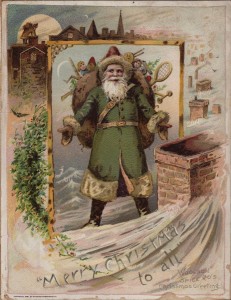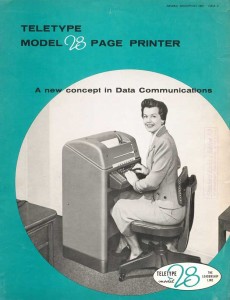It’s the time of year when business picks up at the post office as people across the country get into the holiday spirit. There are gifts and packages to ship, and about 1.9 billion Christmas cards to send.
Greeting cards have actually been around for most of recorded history, going back to ancient China. Europeans were giving greeting cards back in the 1400s. But those early cards were hand-made and hand-delivered. The greeting card as we know it today, commercially made and sent through the mail, did not arrive until the invention of the postage stamp revolutionized mail systems.
Modern commercially printed Christmas cards first appeared in Britain, in 1843, just three years after the introduction of the Penny Black stamp. Back then, the cards usually did not feature winter scenes, but often had fairly elaborate spring-themed pictures. The mails were rapidly becoming inexpensive, efficient and reliable, and the industrial revolution caused the migration of millions of people who were looking to work in the manufacturing centers. As these trends progressed, so did the popularity of (more…)
Related Posts:
Acting USPS Postmaster General John Potter announced his upcoming retirement back on Oct. 25. Potter has been postmaster general since 2001, and has led the postal service through challenging times, starting with the anthrax scares immediately after 9/11 and continuing through today’s sluggish economic climate.
Competition from electronic media intensified over the decade in which Potter served as postmaster general, and contributed to a tight financial situation within the USPS. In response, he sought to streamline operations through updating postal equipment to take advantage of current technology, and by cutting nearly 200,000 full-time positions. A postal service press release regarding his retirement credits him with saving $20 billion in operating costs during his leadership.
Potter’s successor, Deputy Postmaster General Patrick Donahoe, appears to share his vision of a lean operation as a central component of the postal service’s future. An article in the Oct. 26 Washington Post describes Donahoe as looking toward improving operational efficiency, an assessment the outgoing postmaster general echoed in the USPS press release. Donahoe says in the Post article that another issue he’d like to focus on is shortening customer wait times.
Related Posts:
The 20th Century was a period of unprecedented technological advancement in almost every field. Communication in particular was revolutionized during that time, and each breakthrough would contribute in its own way to today's era of near-instantaneous distribution of information.
The first telephone exchange in North America became operational in 1878. But like the telegraph before it, telephones required an infrastructure of physical lines to work, and that limited their use to already developed urban areas. The first “long-distance” call spanned a whole six miles. It would take decades for telephones to become commonplace. Meanwhile another invention was on the horizon that would fill in some of the gaps. Radio was invented right at the turn of the century. Since radios broadcast over airwaves, they didn't need physical lines to operate, and this made them useful in areas that weren't yet well-developed and for shipboard communication. It also soon became a medium for popular entertainment, and a source for news. As the technology progressed, receiving units became small enough to be installed in cars, while two-way radios found their way into cabs, police cars, and trucking companies. They also became an essential tool for the battlefield tactics that were shaped by concurrent advances in mobility.
News agencies owe a great deal of their success in the 20th Century to yet another invention: the teletype machine. An evolution of the stock ticker, which appeared around 1870, the teletype machine allowed the user to send typed messages over a network of simple wires. To this day, we call companies such as (more…)



